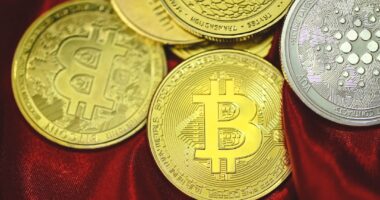Non-fungible tokens (NFTs) have emerged as a revolutionary concept in the realm of digital ownership, fundamentally altering how we perceive and interact with digital assets. Unlike cryptocurrencies such as Bitcoin or Ethereum, which are fungible and can be exchanged on a one-to-one basis, NFTs are unique digital tokens that represent ownership of a specific item or piece of content. This uniqueness is what gives NFTs their value; each token is distinct and cannot be replaced or exchanged for another token of equal value.
This characteristic has made NFTs particularly appealing for artists, musicians, and creators who wish to establish provenance and authenticity for their digital works. The concept of digital ownership through NFTs extends beyond mere possession; it encompasses the rights and privileges associated with the asset. When someone purchases an NFT, they are not just buying a digital file; they are acquiring a verifiable claim to that asset, often recorded on a blockchain.
As a result, NFTs have opened up new avenues for creators to monetize their work while allowing collectors to invest in unique digital items with a clear chain of ownership.
Key Takeaways
- NFTs are digital assets that represent ownership of unique items or content on the blockchain, allowing for verifiable and secure ownership.
- NFT rewards have evolved from simple digital collectibles to include access to exclusive content, experiences, and even financial incentives.
- NFTs have had a significant impact on the art and gaming industries, providing new opportunities for creators, collectors, and players.
- NFT rewards have the potential to revolutionize finance and business by enabling new models for loyalty programs, customer engagement, and asset tokenization.
- Navigating the legal and ethical considerations of NFT ownership is crucial, as it involves issues of copyright, intellectual property, and fair compensation for creators.
The Evolution of NFT Rewards
From Ownership to Engagement
As the market matured, the concept of NFT rewards expanded beyond simple ownership to include various incentives for engagement and participation within digital ecosystems. This shift has led to the integration of gamification elements, where projects like Axie Infinity have demonstrated how NFTs can be used to create engaging gameplay experiences.
Rewards and Incentives
In these experiences, players earn tokens through participation, which can then be traded or used within the game, creating a self-sustaining economy that rewards players for their time and effort. Additionally, some platforms have introduced loyalty programs where users can earn NFTs as rewards for their engagement, further incentivizing participation and fostering community building.
A New Era of NFT Rewards
The evolution of NFT rewards has opened up new possibilities for creators, platforms, and users alike. As the space continues to evolve, we can expect to see even more innovative applications of NFT rewards, driving engagement, participation, and community growth in the digital realm.
The Impact of NFTs on the Art and Gaming Industries

The impact of NFTs on the art industry has been profound, reshaping how artists create, distribute, and monetize their work. Traditional art markets often involve intermediaries such as galleries and auction houses, which can limit artists’ access to their audience and reduce their earnings. With NFTs, artists can sell their work directly to collectors, retaining a larger share of the profits.
Moreover, the ability to embed royalties into smart contracts allows artists to earn a percentage of future sales whenever their work is resold, creating a continuous revenue stream that was previously unattainable. In the gaming industry, NFTs have introduced new paradigms for ownership and monetization. Players can now own in-game assets as NFTs, granting them true ownership over items that were once confined to the game environment.
This shift has led to the rise of play-to-earn models, where players can earn real-world value through their gaming activities. For instance, in games like Decentraland and The Sandbox, players can buy, sell, and trade virtual land and assets as NFTs, creating a vibrant marketplace that mirrors real-world economies. This transformation not only enhances player engagement but also opens up new revenue streams for developers.
Exploring the Potential of NFT Rewards in Finance and Business
| Metrics | Value |
|---|---|
| Number of NFT reward platforms | 15 |
| Average NFT reward value | 0.05 ETH |
| Percentage of businesses using NFT rewards | 30% |
| Projected market growth | 50% annually |
The potential applications of NFT rewards extend far beyond art and gaming; they are beginning to make significant inroads into finance and business sectors as well. One promising area is loyalty programs, where businesses can issue NFTs as rewards for customer engagement. Unlike traditional loyalty points that often expire or lose value over time, NFTs can retain their worth and even appreciate based on demand.
This creates a more compelling incentive for customers to engage with brands, as they can hold onto valuable digital assets that may increase in value. Furthermore, NFTs can facilitate fractional ownership in various assets, including real estate and collectibles. By tokenizing physical assets as NFTs, businesses can allow multiple investors to own a share of an asset without the complexities associated with traditional ownership structures.
For example, a luxury property could be divided into several NFTs representing shares in the property, enabling smaller investors to participate in high-value markets. This democratization of investment opportunities could lead to increased liquidity and accessibility in various asset classes.
Navigating the Legal and Ethical Considerations of NFT Ownership
As the NFT market continues to grow, so too do the legal and ethical considerations surrounding ownership and intellectual property rights. One major concern is the question of copyright: when someone purchases an NFT, what rights do they actually acquire? While owning an NFT typically grants the buyer ownership of the token itself, it does not necessarily confer copyright or usage rights over the underlying content.
This ambiguity has led to disputes over unauthorized sales of copyrighted material as NFTs, highlighting the need for clearer legal frameworks. Additionally, ethical considerations arise regarding environmental impact due to the energy consumption associated with blockchain transactions. Many blockchains that support NFTs rely on proof-of-work mechanisms that require significant computational power, leading to concerns about carbon footprints.
As awareness grows around these issues, there is increasing pressure on developers and platforms to adopt more sustainable practices or transition to energy-efficient alternatives like proof-of-stake systems.
The Role of Blockchain Technology in NFT Rewards

Blockchain technology serves as the backbone for NFTs and their associated rewards systems. By leveraging decentralized ledgers, blockchain ensures that each transaction is recorded transparently and securely, providing an immutable record of ownership that is accessible to all participants in the network. This transparency is crucial for establishing trust among buyers and sellers in an ecosystem where authenticity is paramount.
Moreover, smart contracts—self-executing contracts with terms directly written into code—play a vital role in automating processes related to NFT rewards. For instance, when an NFT is sold or transferred, smart contracts can automatically execute royalty payments to creators without requiring intermediaries. This not only streamlines transactions but also ensures that artists receive fair compensation for their work every time it changes hands.
The integration of blockchain technology thus enhances both security and efficiency within the NFT rewards ecosystem.
Challenges and Opportunities in the NFT Rewards Ecosystem
Despite its rapid growth and potential, the NFT rewards ecosystem faces several challenges that must be addressed for it to reach its full potential. One significant challenge is market volatility; the value of NFTs can fluctuate dramatically based on trends and speculation, making it difficult for creators and collectors to gauge true worth. This volatility can deter potential investors who may be wary of entering a market characterized by rapid price swings.
On the other hand, these challenges also present opportunities for innovation within the space. For instance, platforms are beginning to explore ways to stabilize NFT prices through mechanisms such as buyback programs or price floors that protect against extreme fluctuations. Additionally, educational initiatives aimed at informing users about the risks and benefits associated with NFTs could foster a more informed community that engages responsibly with this emerging technology.
The Future of NFT Rewards: Trends and Predictions
Looking ahead, several trends are likely to shape the future of NFT rewards across various sectors. One prominent trend is the increasing integration of augmented reality (AR) and virtual reality (VR) technologies with NFTs. As these technologies become more mainstream, we may see immersive experiences where users can interact with their digital assets in virtual environments—transforming how we perceive ownership and engagement.
Another trend is the rise of cross-platform interoperability for NFTs. Currently, many NFTs are confined to specific platforms or ecosystems; however, there is growing demand for standards that allow assets to be transferred seamlessly across different environments. This interoperability could enhance liquidity in the market by enabling users to trade or utilize their NFTs across various applications without restrictions.
The interplay between creativity, technology, and commerce will undoubtedly yield new opportunities for innovation while also challenging us to navigate complex legal and ethical landscapes in this burgeoning field.
If you are interested in learning more about NFT rewards, you may want to check out this article on ETH News. This website provides valuable insights and updates on the world of Ethereum and blockchain technology. Additionally, you can also read their introductory article on NFTs at Hello World to gain a better understanding of how NFT rewards work and their potential benefits.
FAQs
What are NFT rewards?
NFT rewards are non-fungible tokens that are given as incentives or bonuses to users for participating in certain activities within a specific platform or ecosystem.
How do NFT rewards work?
NFT rewards work by providing users with unique digital tokens that are stored on a blockchain. These tokens can represent various digital or physical assets and can be traded or used within the platform that issued them.
What can NFT rewards be used for?
NFT rewards can be used for various purposes, including accessing exclusive content, participating in special events, unlocking additional features, or even redeeming for physical goods or services.
Are NFT rewards valuable?
The value of NFT rewards can vary depending on factors such as scarcity, demand, and the underlying assets they represent. Some NFT rewards can have significant monetary value, while others may hold more sentimental or collectible value.
How can one earn NFT rewards?
Users can earn NFT rewards by engaging in activities such as participating in a platform’s ecosystem, completing specific tasks, contributing to a community, or holding certain tokens or assets within a blockchain network.
Are NFT rewards sustainable?
The sustainability of NFT rewards depends on the underlying blockchain technology and the ecosystem that supports them. As the technology continues to evolve, efforts are being made to address concerns related to energy consumption and environmental impact.





